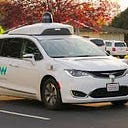Tesla Goes All In On Cameras
This week, Tesla posted to their Support website that they are “transitioning to vision.”
“Beginning with deliveries in May 2021, Model 3 and Model Y vehicles built for the North American market will no longer be equipped with radar. Instead, these will be the first Tesla vehicles to rely on camera vision and neural net processing to deliver Autopilot, Full-Self Driving and certain active safety features.”
Credit to Tesla for demonstrating the courage of their convictions. Like many outsiders, I doubt that this is the best step forward, but it’s a step consistent with Elon Musk’s long track record of public statements that sensors beyond cameras are unnecessary.
The logic has always been straightforward — humans can drive with just vision (perhaps lightly augmented by the senses of hearing and feel), and cars should be able to do that as well.
The countervailing perspective is that a vision-only approach is theoretically, and probably eventually, possible, but additional sensors will achieve self-driving capability much faster, and more safely. By way of analogy, humans can move across the ground with nothing but our own two feet, but we discovered that we can move much faster with the aid of tools like bicycles, cars, and roads.
Tesla is encountering a lot of resistance from industry experts who are unhappy, I think justifiably so, about Tesla’s lack of a driver monitoring system. Combined with the hype around Tesla’s misleadingly named, “Full Self-Driving” feature set, some Tesla drivers are abdicating their driving responsibility and endangering other cars on the road.
I distinguish the lack of a driver monitoring system, which is problematic for the public writ large, from this move toward a vision-only approach, which is a particular technology approach that Tesla is taking. I’m excited to see how it works out for them.
Originally published at http://davidsilver.blog on May 28, 2021.

